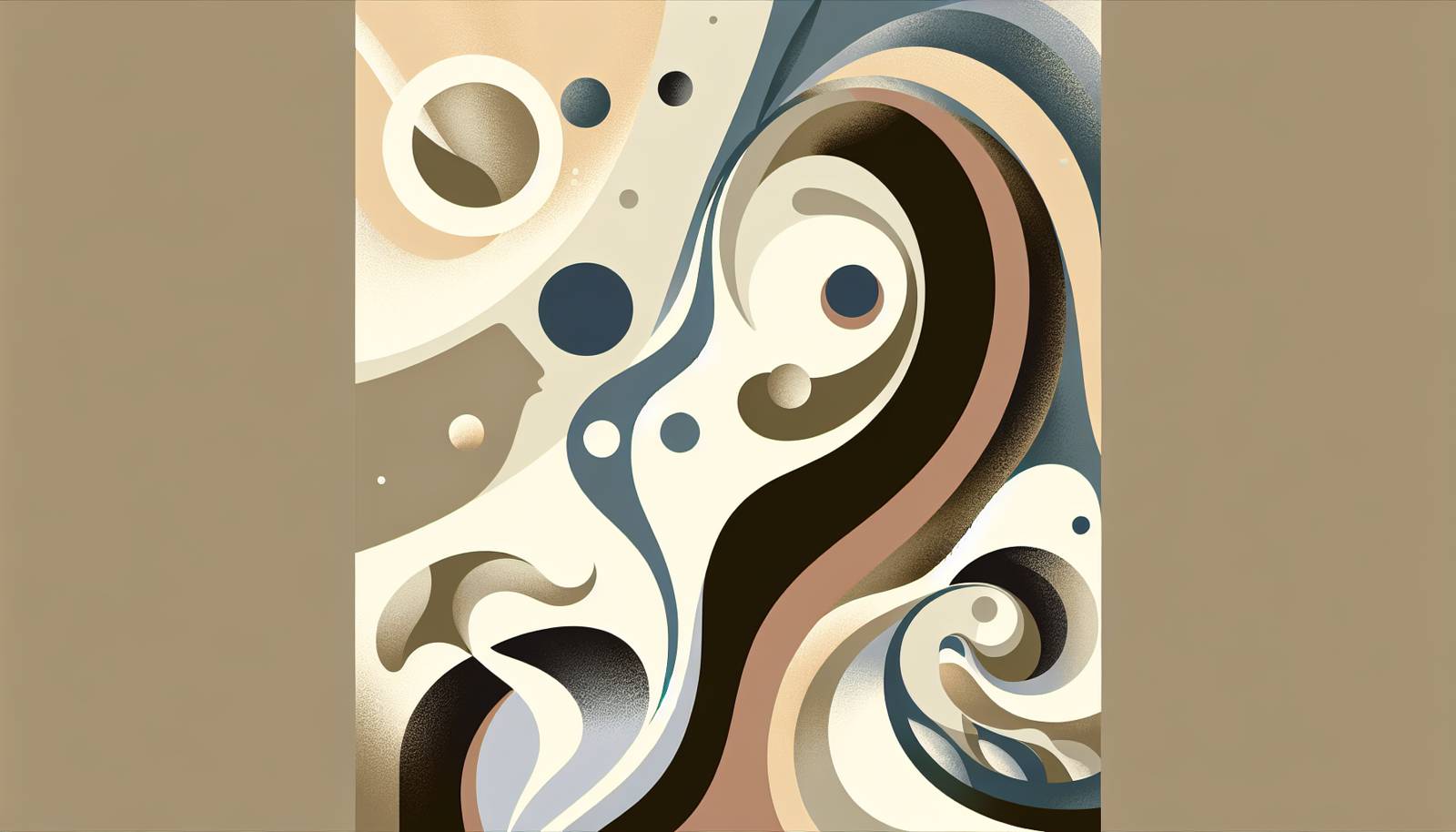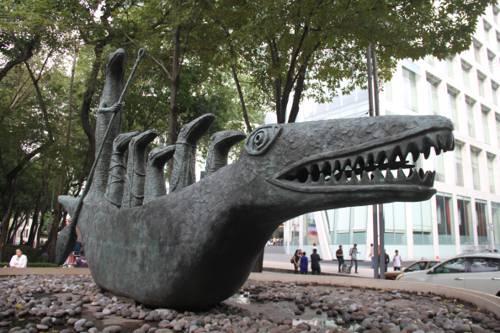
FAQ About The Influence of Surrealist Sculpture on Modern Art

What is surrealist sculpture?
Surrealist sculpture is a three-dimensional art form that emerged during the Surrealist movement in the early 20th century. It seeks to challenge conventional perceptions by juxtaposing ordinary objects and absurd elements to evoke the subconscious mind and dream-like imagery. Artists use various materials to create these bizarre and fantastical forms, often focusing on themes of dream, fantasy, and the unconscious.

Who are some key artists in surrealist sculpture?
Prominent figures in surrealist sculpture include Salvador Dalí, with his sculptural works such as "Venus de Milo with Drawers," and Jean Arp, known for his organic, abstract sculptures. Other notable artists include Alberto Giacometti, whose slender sculptures combined human forms with abstraction, and Meret Oppenheim, famous for works like "Object (Breakfast in Fur)."

How did surrealist sculpture influence modern art?
Surrealist sculpture has greatly influenced modern art by pushing boundaries and introducing new perspectives on form and content. Its emphasis on the subconscious and dreamlike imagery encouraged artists to explore beyond traditional realism, paving the way for abstract expressionism and contemporary installations. The movement's innovative use of materials and the exploration of irrational themes helped diversify the landscape of modern art.

What are some famous surrealist sculptures?
Some famous surrealist sculptures include Salvador Dalí's "Lobster Telephone," René Magritte's "The Healer," and Meret Oppenheim's "Object (Breakfast in Fur)." These works exemplify the movement’s characteristic blending of the bizarre and the dreamlike, using unexpected materials and forms to challenge viewers' perceptions of reality.

Which themes are commonly explored in surrealist sculpture?
Surrealist sculpture often explores themes such as dreams, the subconscious, fantasy, and the uncanny. Artists frequently incorporate symbols of transformation, displacement, distortion, and metamorphosis, aiming to disrupt rational conventions and evoke emotional and psychological responses from the viewer.

How did surrealism as a movement begin?
Surrealism began in the early 1920s, primarily influenced by the Dada movement and led by French poet André Breton, who published the "Surrealist Manifesto" in 1924. It aimed to explore the depths of the human psyche through art, literature, and philosophy, rejecting traditional values and emphasizing the role of chance and imagination. Sculptors, alongside painters, played a key role in embodying these principles through innovative three-dimensional works.

What techniques are commonly used in surrealist sculpture?
Surrealist sculptors often employed techniques such as assemblage, transformation, and juxtaposition to create unexpected and dream-like forms. Assemblage involved combining disparate objects or materials into a cohesive whole, while transformation could mean altering an object’s original form or function. Juxtaposition involved placing unrelated elements together to evoke surprise or introspection.

How does surrealist sculpture challenge traditional sculptural norms?
Surrealist sculpture challenges traditional norms by emphasizing irrationality, dream imagery, and unexpected materiality. Unlike classical sculpture, which focuses on realistic representation and symmetry, surrealist works break from convention by exploring abstract concepts, experimental forms, and the illogical aspects of the human psyche. This approach has influenced subsequent modern art movements seeking to diversify artistic expression.

In what ways has surrealist sculpture inspired contemporary artists?
Contemporary artists have drawn inspiration from surrealist sculpture through its innovative use of materials, conceptual depth, and boundary-pushing themes. It has encouraged artists to explore subjects like identity, technology, and the subconscious more freely, often in interdisciplinary forms such as installations and digital media. The surrealist legacy thus continues to inspire the breaking down of artistic barriers in contemporary practice.

Are there specific materials unique to surrealist sculpture?
While surrealist sculptors utilized traditional materials like clay and bronze, they also famously incorporated non-traditional materials, including found objects, organic materials, and even household items. The unique aspect was how these materials were used to evoke absurdity and disrupt conventional forms, as seen in works like Salvador Dalí's "Lobster Telephone" or Meret Oppenheim's "Object (Breakfast in Fur)."

What role did dreams play in surrealist sculpture?
Dreams played a central role in surrealist sculpture, serving as a key source of inspiration for its themes and forms. Surrealists viewed dreams as an access point to the subconscious, offering pure and untainted expressions of innate desires and fears. Sculptural works often sought to capture the bizarre, fragmented, and symbolic nature of dreams, aiming to blur the boundaries between reality and imagination.

How did surrealist sculpture evolve over time?
Surrealist sculpture evolved from early, experimental works focusing on abstract forms and dream imagery, into more complex pieces exploring identity, politics, and existential themes. Over time, sculptors began incorporating new materials and technologies, contributing to movements like abstract expressionism and contemporary installations. The surrealist focus on the subconscious has remained a lasting influence on modern art's development.

Can surrealist sculpture be considered a form of abstract art?
Yes, surrealist sculpture can often be considered a form of abstract art, as it frequently incorporates abstract forms and eschews realistic representation. Surrealist works emphasize irrationality, the subconscious, and dream imagery, aligning them with abstract art's principles of exploring non-representational forms and ideas. However, surrealist sculpture also includes recognizable elements combined in unexpected ways, setting it apart from purely abstract styles.

What makes surrealist sculpture distinct from other surrealist art forms?
Surrealist sculpture is distinct from other surrealist art forms mainly in its three-dimensional nature, allowing for physical interaction and presence within the viewer’s space. Unlike surrealist paintings, which convey dream imagery through flat surfaces, sculptures offer tactile, spatial experiences, enhancing the capacity to evoke the subconscious and irrational elements inherent in surrealism.

How is symbolism used in surrealist sculpture?
Symbolism in surrealist sculpture involves using objects and forms to represent deeper psychological, sexual, or existential themes. Artists use seemingly ordinary items in bizarre contexts to invoke symbolic meanings—such as transformation, desire, or fear—instigating personal interpretation and emotional responses from viewers. This symbolic depth adds layers of understanding to the unconventional imagery in surrealist works.

What is the legacy of surrealist sculpture today?
The legacy of surrealist sculpture today is its profound impact on modern and contemporary art, inspiring artists to explore new materials, forms, and concepts. The movement's emphasis on the subconscious and imagination has paved the way for innovative art practices and interdisciplinary approaches, influencing installations, performance art, and digital media. Surrealism’s legacy remains visible in the questioning and expanding of conventional artistic boundaries.

What are the differences between surrealist and Dadaist sculptures?
While both surrealist and Dadaist sculptures challenge traditional art norms, they differ in intent and thematic focus. Dadaist works often emphasize absurdity and anti-war sentiments through chaotic and radical forms, reflecting a disillusionment with societal norms. Surrealist sculptures, in contrast, delve into the subconscious and dreamlike imagery, seeking to explore the inner workings of the human mind beyond societal critiques.

How did surrealist sculpture influence popular culture?
Surrealist sculpture has influenced popular culture by inspiring new ways of thinking about visual imagery, storytelling, and design. Its concepts have permeated mediums such as film, fashion, and advertising, where surreal imagery often appears to evoke emotional and psychological responses. Icons like Salvador Dalí became cultural symbols, blending art with popular media, thereby spreading surrealist ideas beyond traditional art contexts.

Are there surrealist sculptures in public spaces today?
Yes, many surrealist sculptures can be found in public spaces around the world. These artworks often serve as landmark attractions, drawing visitors with their intriguing and unconventional forms. Cities like Paris and Barcelona feature prominent examples, with sculptures by artists such as Joan Miró in urban settings, blending cultural history with modern-day accessibility.

Why is surrealist sculpture still relevant today?
Surrealist sculpture remains relevant today due to its timeless exploration of the human psyche and its innovative approach to form and content. Its influence continues to be seen in contemporary art, where themes of dreams, identity, and reality inspire artists to push creative boundaries. The movement's legacy persists in questioning artistic conventions, encouraging new expressions of ideas, and reflecting the complexities of modern life.
